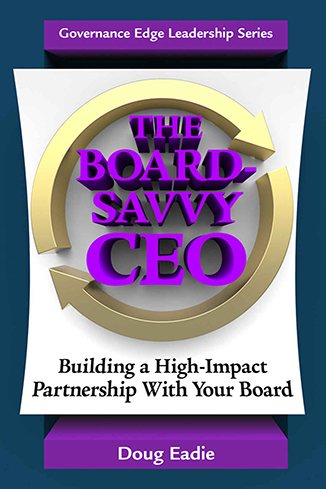 I tell the following true story in my book Changing By Design (Josey-Bass):
I tell the following true story in my book Changing By Design (Josey-Bass):
Almost thirty years ago, when I was serving as budget officer of a state government’s urban affairs department, I had the good fortune to participate in the five-year “strategic” planning process that was being implemented in all state departments with considerable fanfare and high expectations (at least among those who were new to state government). Indeed, the governor personally and stirringly addressed assembled executives from throughout state government at an impressive kickoff meeting involving the whole cabinet. The message was clear: “This is a new era of progressive, modern public management, and this planning initiative is the shining example of our commitment to innovative government. Sweep away the cobwebs, jump on board, help lead the charge into a brighter future.”
Days later, sitting with my department senior management colleagues in a work session to assess progress in filling out the new planning forms, I asked the question: “How can we realistically project what the department should be doing in specific programs, such as technical assistance to local community action agencies, much more than a year hence?” The response, which struck me as very sensible, was “Guess, but make it look good.” That was sound advice as it turned out. Recognizing that the process should not be taken too seriously, we proceeded to apply arbitrary percentage increases in level of effort and dollars for years two through five. What else could we do? We had no way of knowing what the future was to bring much beyond a year, so how could we plan current programs two or more years ahead? By the way, the “good fortune” I referred to at the beginning of this sad story had to do with my opportunity to learn about the limits of “strategic” long range planning, not about my introduction to a powerful planning process.
I recalled this valuable learning experience recently as a nonprofit CEO and I looked through her organization’s so-called three year “strategic plan” that on close examination turned out to be – no surprise! – essentially operational: spelling out detailed operational “objectives” in broad goal areas within current programmatic boundaries. The “strategic” label had to do with the projection of these objectives three years into the future. As the CEO and I looked through the document, which her board had been involved in developing, we agreed that what we were reviewing was the annual operating plan x 3. It was patently obvious that we weren’t examining a powerful tool for generating significant “out of the box” innovation. And adding insult to injury, in a rapidly changing world, projecting current activities three years into the future provided only the illusion of control.
What makes conventional strategic planning for arbitrary periods such as three or five years such an insidious foe of a solid board-CEO working relationship is that it can give the illusion of systematically leading innovation and change – a survive-and-thrive tool in a rapidly changing world. Getting your board engaged in a process labeled “strategic” that ends up merely projecting the present into the future is without question a high-risk CEO strategy. Since the results cannot possibly justify the investment of time and money in the planning process, the CEO’s credibility inevitably takes a hit, and board members deeply resent wasting precious time while making little difference.





